
Comprehensive and ongoing training is key to the success of the Los Angeles Police Department’s Air Support Division.
Law enforcement managers constantly focus on finding equipment and tactics that provide better protection for their officers in the field. One that earlier generations of them yearned for was an airborne platform that could spot fleeing suspects and point the way for patrol officers to apprehend them. As well, officers called to search for elderly citizens who have wandered away from their protected spaces could do so more effectively with an overhead platform assisting them.
It was not a surprise then, when helicopters debuted in American skies after the Second World War, that law enforcement agencies began to think about putting them to work. Bell 47s, the first helicopters available on a commercial scale, were pressed into service in New York, Chicago and Los Angeles. The results were good even though the 47 was so slow that sometimes it arrived overhead after the crisis was over.

The Los Angeles Police Department (LAPD) has been flying in support of patrol since the early 1960s when a fleet of Bell 47s was put into service. In 1968, the Department bought its first Bell 206 JetRanger. Now named the Air Support Division (ASD), 14 additional JetRangers were added to the fleet and full time deployment to all patrol districts was implemented. ASD helicopters were then airborne 24/7, available in minutes to patrol units all over Los Angeles.
Flying out of Hooper Heliport — ASD’s home base — atop LAPD’s Piper Technical Center in downtown Los Angeles, the JetRangers flew thousands of patrol hours a year, its pilots averaging 80 hours a month. A totally self-contained operation, the patrol fleet is based there along with onsite fueling and maintenance. All ASD aircrew report to work at Hooper, with the exception of a few check pilots who cover remote duty stations.
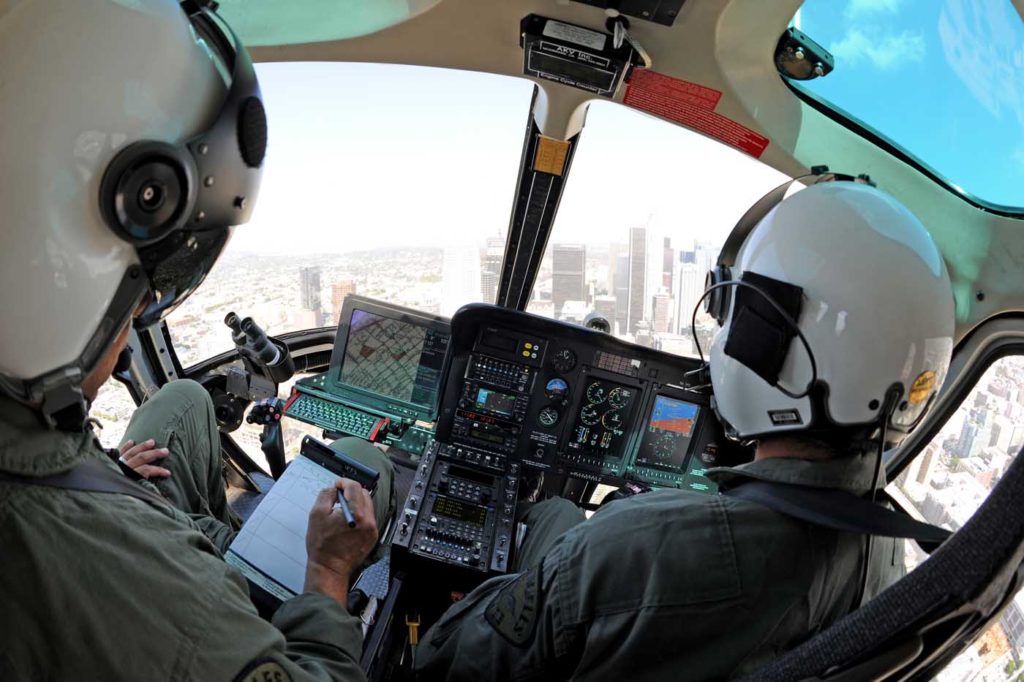
In 1989, the first Wescam airborne cameras became available. They offered a powerful search tool as well as recorded video to support criminal case filings. But the JetRanger, limited by performance and weight to its simple searchlight and rudimentary radio system, couldn’t carry the bulky devices. So ASD began searching for a helicopter that had the additional airframe and power to accommodate the cameras. The Eurocopter (now Airbus) AS350 B2 AStar was selected the same year and ASD began transitioning the fleet, phasing out the JetRangers from patrol duty while retaining a handful of them for pilot training.
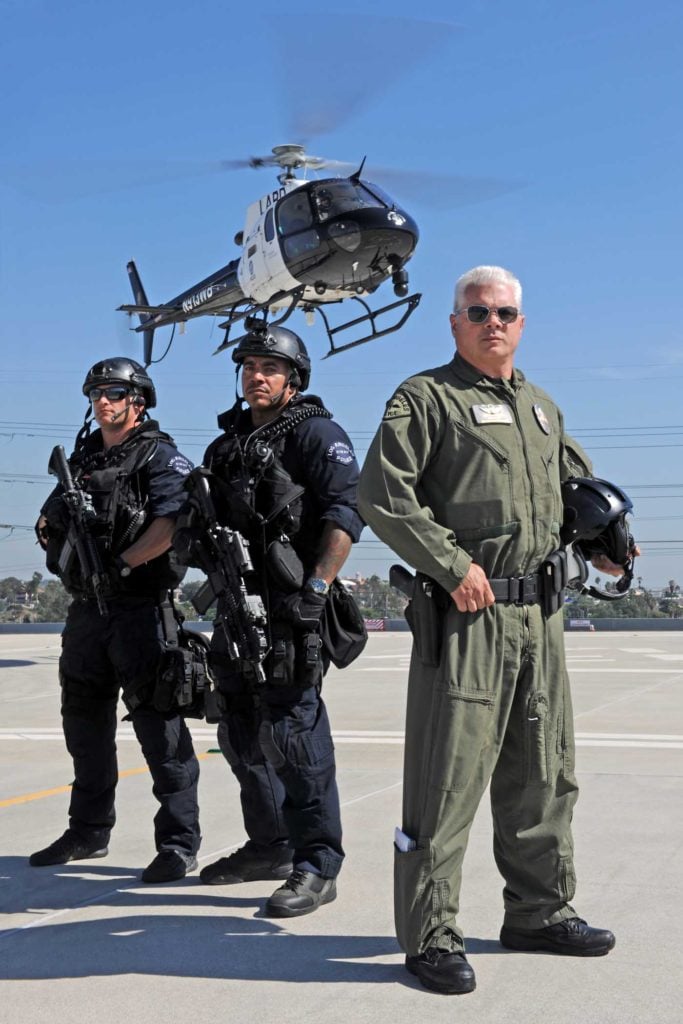
The AStar also was faster than the JetRanger, reducing response times to calls for assistance. The AStar’s larger cabin and baggage space allowed for a broader mission set, including transporting small specialty teams and supporting more complex surveillance missions that required additional personnel on board.
The new AS350s were delivered with forward-looking infrared (FLIR) sensors along with a camera system, a more powerful searchlight and a sophisticated, computerized mapping system. Additional communication systems provided access to other public safety agencies as well as special law enforcement teams, further broadening the helicopter’s capabilities. In 2015, data link systems were installed in the AStar fleet, providing for streaming video data to regional command and control centers in support of major crime scenes as well as natural disasters.
The AStar’s larger cabin, smoother rotor system and modern crew seats provided a more supportive work environment for the pilots and tactical flight officers, or TFOs, who from the left seat employ all the onboard systems to find suspects in a tactical situation and advise patrol officers at the scene how best to apprehend them.
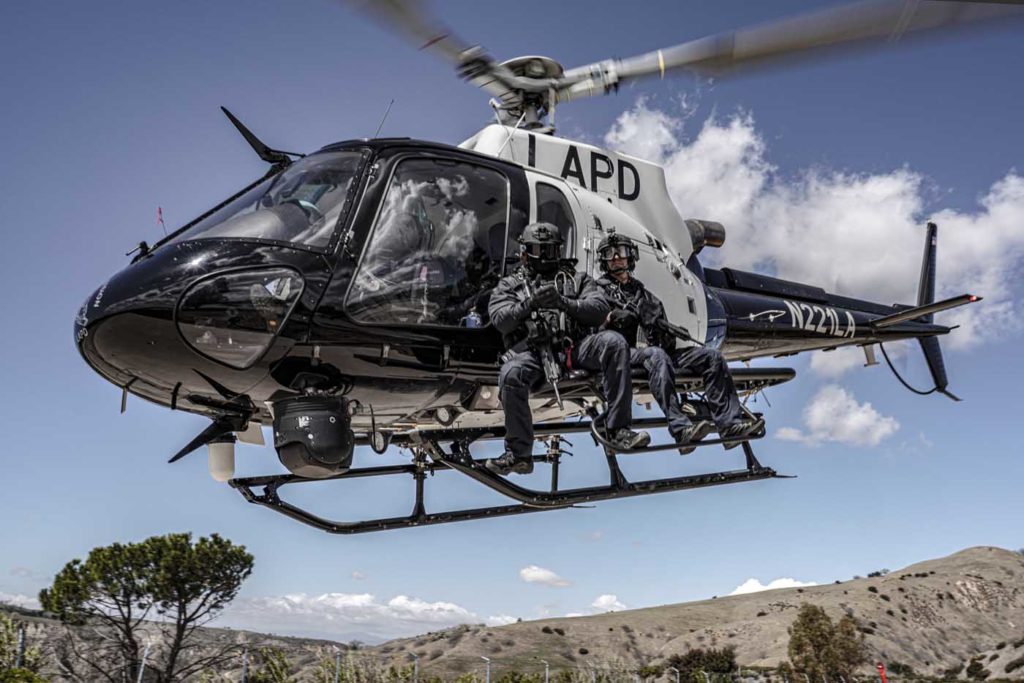
LAPD’s original fleet of AS350 B2s is being updated with new AS350 B3e helicopters, now called the Airbus H125. Currently seven of the 14-ship fleet are now 125s. Retired B2s, with an average airframe time of 15,000 hours, are sold through the city’s equipment management system.
As the 21st century dawned, ASD’s mission demands continued to grow and additional aircraft were added to support them. In 2002, a King Air 200 was acquired from Federal General Service Administration surplus for prisoner transport, for detectives on out-of-town investigative missions and administrative transport missions. Pilots for the King Air are selected from ASD personnel based on their airplane background and/or their fitness for airplane missions.
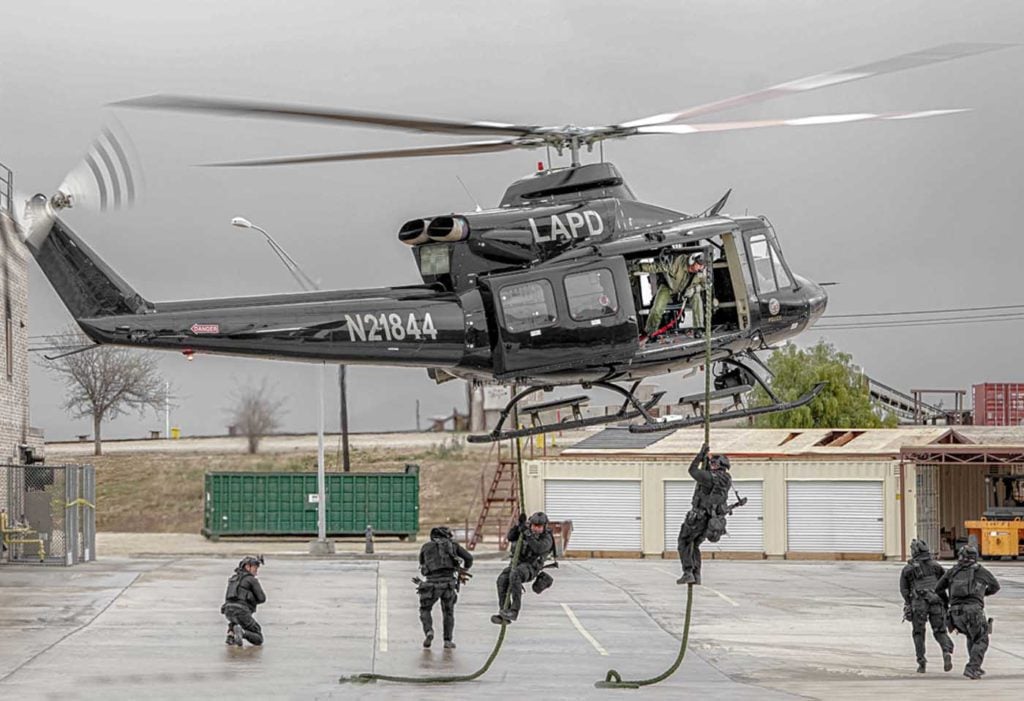
A Bell 412 was recently added to the fleet as the Los Angeles Fire Department phased out their 412s and replaced them with Leonardo AW139s. The 412 flies special operations missions, supporting the LAPD SWAT team, bomb squad and other special operations units. As with the King Air, pilots are selected based on their ability to fly effectively within the 412’s wider operating envelope.
Professional pilots
Like most airborne law enforcement units, ASD recruits pilots from the ranks of the department. Applicants are required to have a minimum of five years service in patrol and a private pilot license with either an airplane or helicopter rating before they can apply. Additional flight experience is considered an asset but is not a requirement for selection. A board composed of ASD managers conducts an interview with each candidate. Some are then invited to join the unit and enter one of the most extensive pilot training programs in the world.
Kevin Gallagher is ASD’s chief pilot. Most of the improvements in their training program have happened on his watch.
“Our selection process is unique among law enforcement agencies in that we don’t place new pilot candidates in tactical flight officer training. Most agencies recruit pilots into the TFO position with a path forward to pilot training as vacancies arise. Our TFOs are recruited through their own separate process. On completing their training they serve within our TFO unit with no planned path to becoming pilots,” Gallagher said.
“However, after five years of successful service as a TFO, an officer can apply for a pilot position or, if that TFO secures their own private pilot license they can apply for a pilot position after one year’s service as a TFO. Those candidates are valuable to us because once they’ve completed training they can become TFO training pilots, flying with new TFOs as their training officer to complete their qualifications.”
“These pilot candidates have already proved during their time on the department that they’re accomplished professionals, and our training philosophy takes that into account.”
The third avenue of pilot recruitment is to apply for an ASD supervisor position. Sergeants and lieutenants from anywhere in LAPD can apply to ASD for a position when openings are available. If they’re selected a candidate will complete pilot training and become a qualified patrol pilot.
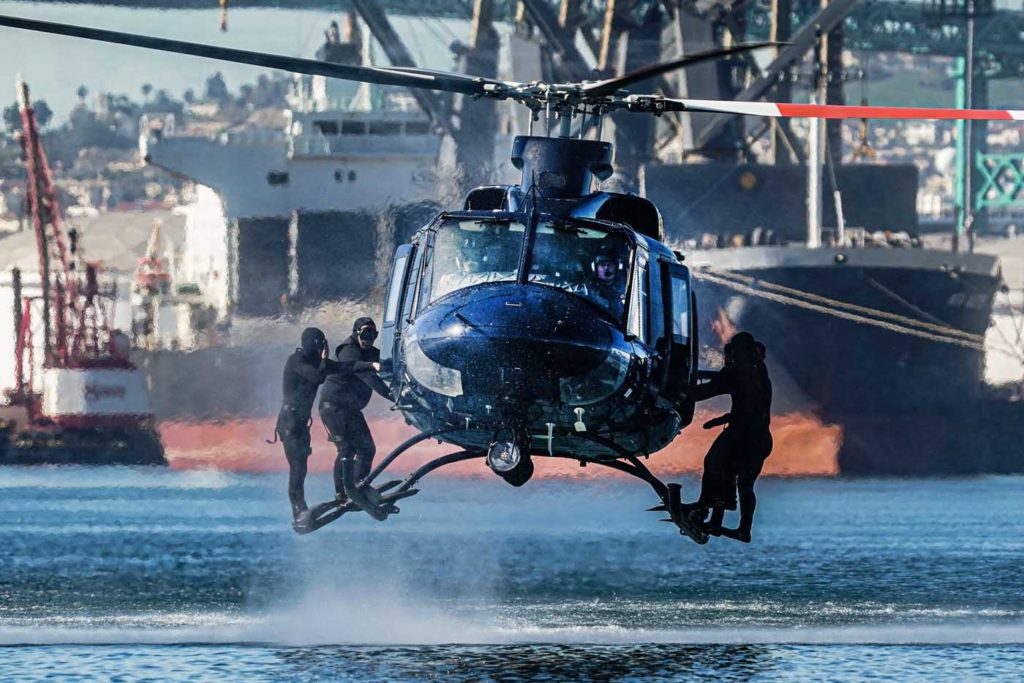
“Our patrol pilots operate in a tough environment: low altitude, low airspeed over densely populated areas,” said Gallagher. “If something happens with the aircraft they have to make the right choices immediately to avoid a dire outcome. That requires a strong level of proficiency and judgment. Training is how we help them maintain their high skill levels.”
Training tactics
Forming the core of the Air Support Division training program, the two elements fundamental to training are highly motivated instructors who are expert at the patrol mission and frequent training events. Air Support Division supervisors recognized that the pilots as a group demonstrated a sharper edge to their flying when training programs were actively in session around them. Other aviation organizations have similarly seen that the more frequent the training and the closer it is adapted to pilots’ specific mission needs, the higher the skill level in daily flight operations.
Determined to foster the safest possible operating environment, Air Support Division management created a system of ongoing training programs. First, they had to select those who would become check pilots. Candidates need a minimum of five years pilot experience in ASD and 3,000 flight hours, along with a demonstrated consistently high level of flying skills, good judgment and a desire to learn.
Full check pilot qualification is granted to those who complete a comprehensive set of requisites. They include Federal Aviation Administration (FAA) certified flight instructor with rotorcraft and rotorcraft instrument rating, and an airline transport rating (CFI, CFII and ATP); the University of Southern California aviation safety course; the Airbus factory maintenance test pilot course, and the Air Support Division’s functional test pilot course.
“We now have a core group of check pilots who support the entire division,” Gallagher said. “They perform all the training tasks that keep Air Support in business. Starting with our flight school, where they train our new pilots, our check pilots also give each patrol pilot quarterly proficiency reviews, provide advanced training at the CFI and ATP level, conduct test flights on all aircraft being returned to service out of maintenance, and special mission training in support of our special operations teams, SWAT, bomb squad and others.”
Flight training for new pilots commences in one of the AS350 B2s with the objective of completing the qualifications for an FAA commercial license with a rotorcraft rating.
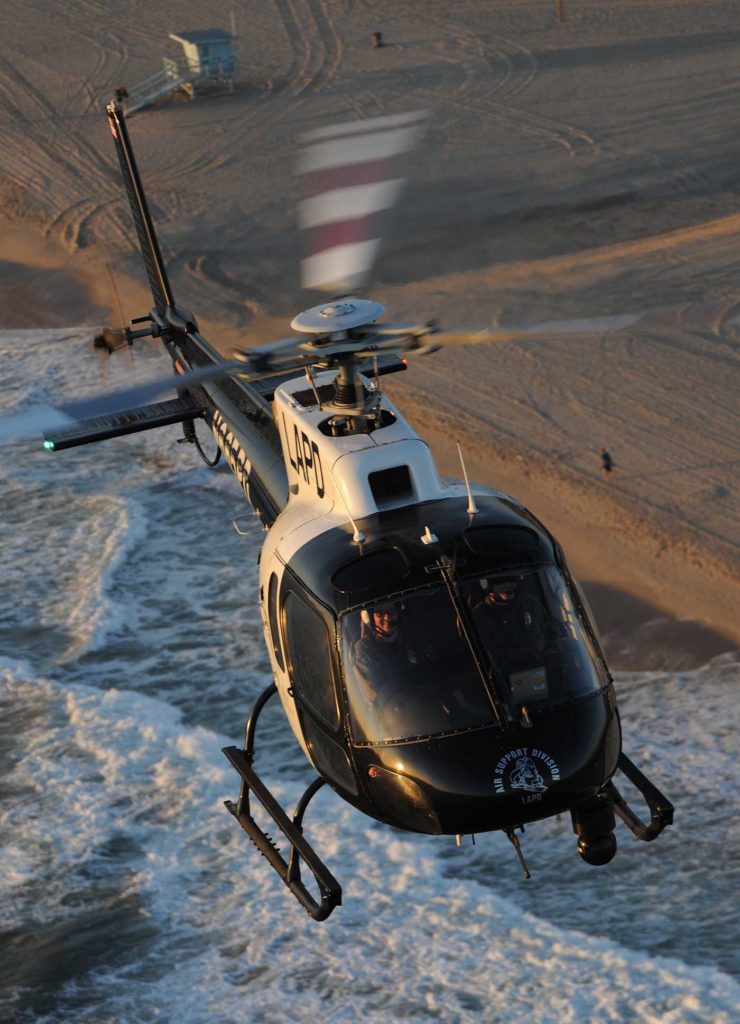
“These pilot candidates have already proved during their time on the department that they’re accomplished professionals, and our training philosophy takes that into account,” Gallagher said. “So, if one of them has a problem at some stage in the training our instructors focus on remedial methods rather than failing them out of the program. They’re well versed in analyzing learning errors and on how to correct the candidate’s thinking to get back on track.”
Ground school is taught in small classrooms in the Hooper Heliport complex with curriculums tailored to the particular needs of the law enforcement mission. With both instructors and candidates dedicating their full time to the program, candidates usually complete the commercial curriculum in 10 to 12 months.
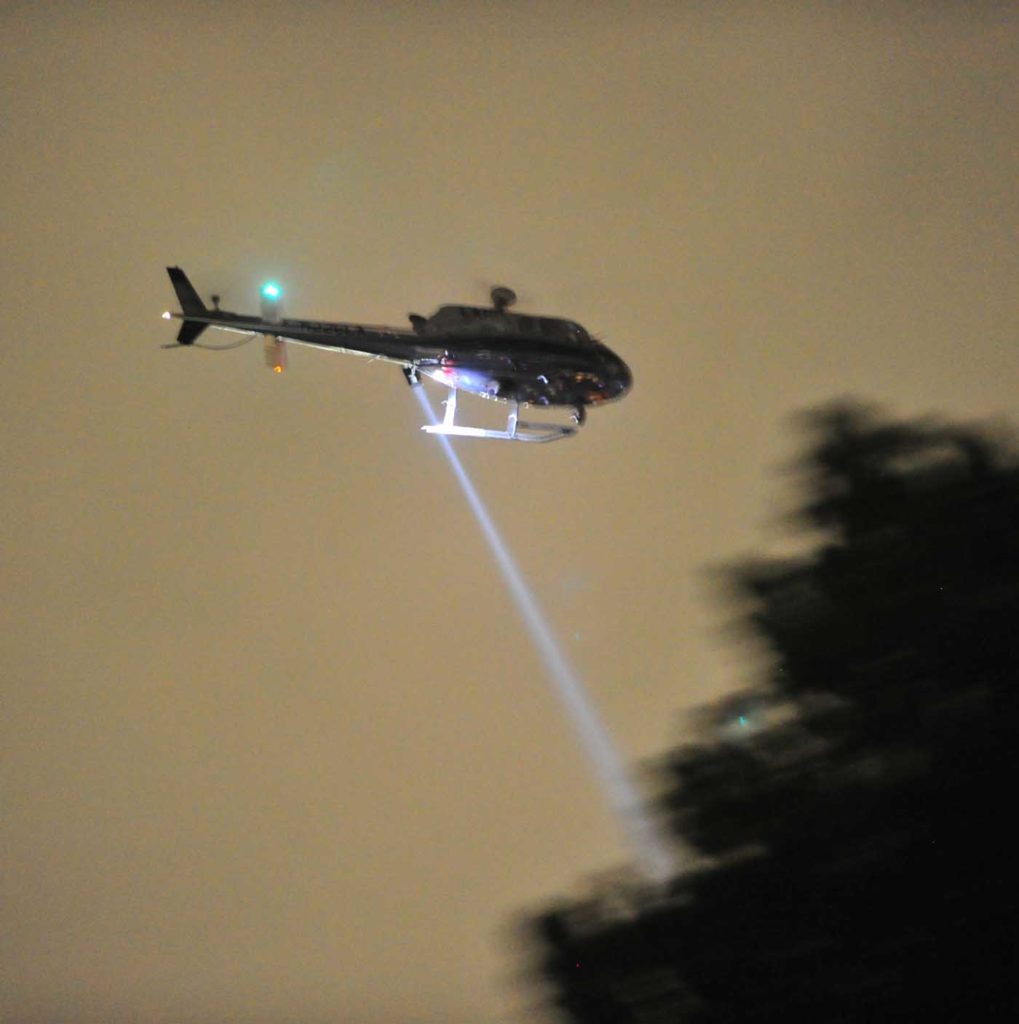
Check rides during training are administered by FAA inspectors when they’re available, or, if not, by designated pilot examiners approved by ASD. To maintain a constant outside look at proficiency, every ASD check pilot takes an annual proficiency evaluation flight with factory-qualified AStar examiners from a third-party training agency.
Pilot candidates for the Los Angeles Fire Department are sent to LAPD’s flight school for their initial pilot training. These pilots fly LAPD JetRangers because the fire department uses JetRangers for their departmental flight reviews.
“We’ve trained 10 of the current 16 pilots serving in the fire department,” Gallagher said.
LAPD pilot candidates, on completing their commercial pilot training, are urged to continue on and complete their helicopter instrument ratings so they are better equipped to manage the complex Los Angeles area airspace and to fly their way safely out of inadvertent entry into instrument meteorological conditions.
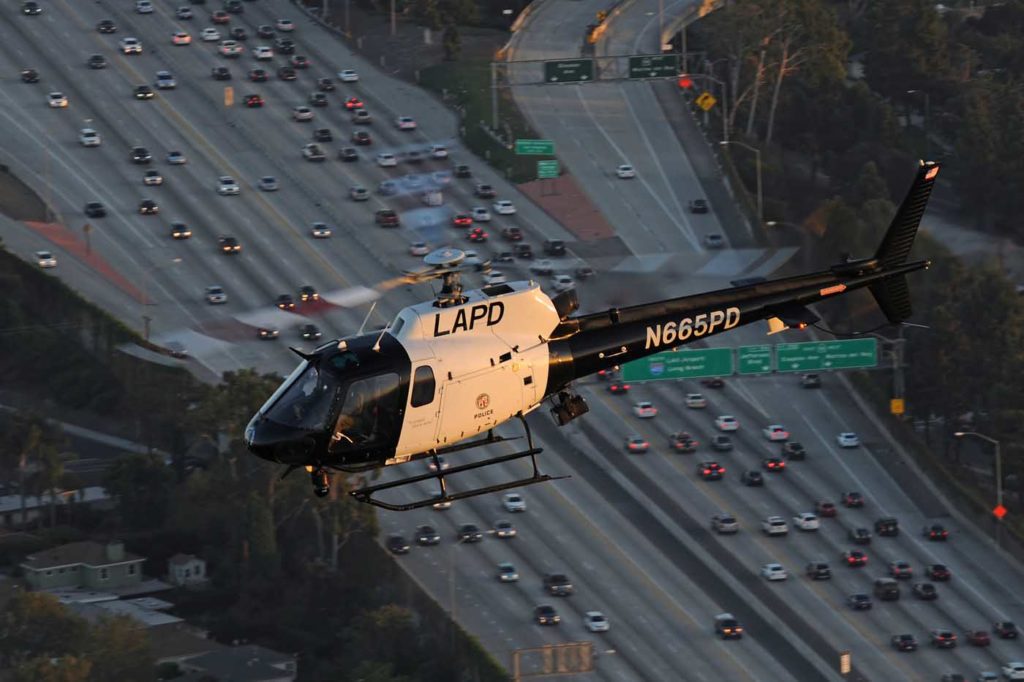
“Our formal training standards within the city’s personnel system were originally set up for completion of the FAA commercial, so that is the official standard, but almost all of our pilots complete instrument training before they leave the flight school,” Gallagher said.
“We fly in a lot of marginal VFR [visual flight rules] weather in Los Angeles, especially at night. The potential for inadvertent IFR [instrument flight rules] is all around us, and we’re flying in the very complex airspace surrounding Los Angeles Airport, so we’ve found the best defense is instrument competency built in at the instrument pilot level. Our pilots are trained and equipped to immediately handle it if they fly into fog or low clouds, establishing positive control and working with the local approach controllers to either fly out of the IFR conditions or complete an instrument approach to a nearby airport.”
Lifelong learning
On completion of their flight training and a final check ride with the chief pilot, each new pilot receives LAPD command pilot wings in a formal ceremony hosted by ASD commanders with families in attendance. They begin flying patrol missions the next day.
The training never stops, though, even when pilots have successfully completed the training syllabus and begin flying patrol. Each ASD pilot attends recurrent ground and flight training once a quarter. Similar to a biannual flight review, periodic checkups include brief reviews of flight subjects along with updates as well as ASD operating policies and procedures. The flight segments focus on emergency procedures, assuring that during low-level operations in crowded airspace, where the options for a precautionary or emergency landing are a crowded street or a small parking lot, each pilot’s skills will be up to the task.
In keeping with Gallagher’s commitment to provide the best possible training for his pilots, ASD began using simulator training when the AS350s were acquired. “We used Airbus’s AS350 sims,” said Gallagher. “But the dry lease arrangement we had there created too much of a burden on our training staff. When the FlightSafety program came online we were able to use their instructors and streamline the training path.”
“When we acquired the King Air it was clear that sim training was the accepted standard,” he added. “Luckily FlightSafety offers King Air training right down the road in Long Beach. All our King Air pilots attend formal recurrent training there once a year.”
In 2015, when FlightSafety announced the first AS350 full motion simulator would be available at FlightSafety’s Denver facility, Gallagher and a small team of LAPD’s senior pilots flew in to assess its potential as a training asset.
“After a full day of taking the sim through the entire emergency procedures list, we decided to integrate it into our training program,” Gallagher said. In 2016, ASD began planning for four pilots a month to cycle through the FlightSafety recurrent course.
Also in 2015, the Bell 412 joined the fleet. Five pilots were selected to fly it using a two-person crew. Those five attended the 10-day FlightSafety 412 initial course. Every year the group returns to FlightSafety for a recurrent course, with the occasional initial course for pilots replacing others who have cycled out of the 412 into other assignments.
Conducting missions in the furthest reaches of Los Angeles, the 412 flies over open, unlit territory, requiring night vision goggles (NVGs) for the pilots. More recently, as ASD increased its support of LAPD special operations teams, night operations into the outer regions of greater Los Angeles required that AStar pilots be NVG-qualified as well. Known as airborne platform tactics operations, three of the new H125s are NVG configured. NVG training is conducted in the aircraft along with a ground school designed to comply with FAA Part 61 regulations on NVG training.
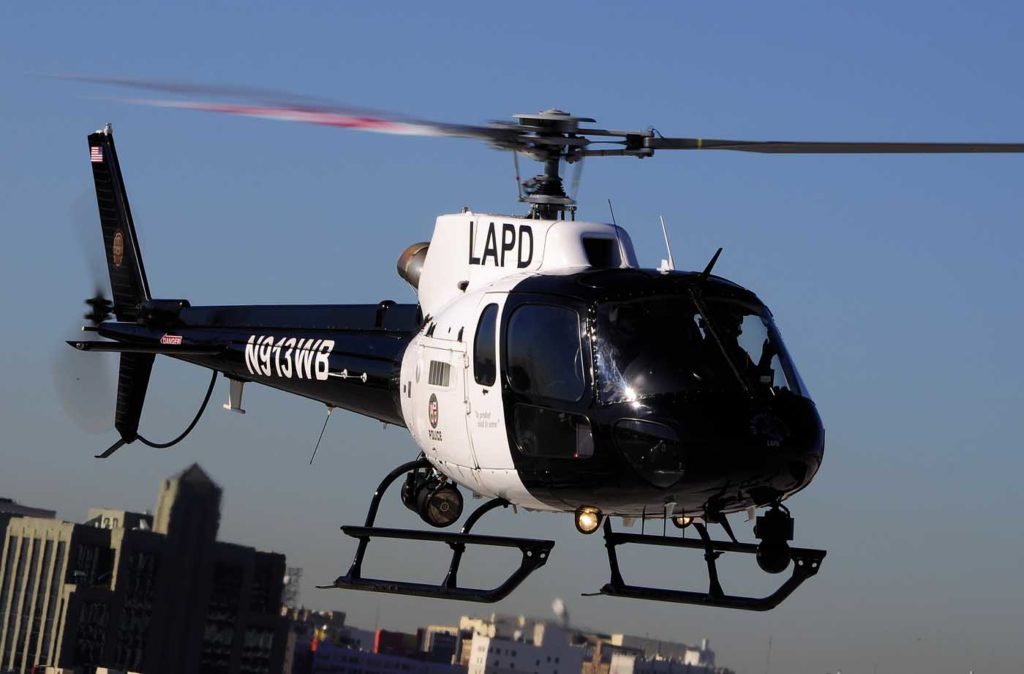
Operationally, the 412 crews train with LAPD SWAT teams on scene insertion and overhead support techniques, providing an initial overhead assessment platform for SWAT members, then, on deciding on an insertion plan, executing it, and establishing tactical oversight while the mission evolves.
“As is evident in our support of LAPD special operations, our mission mix continues to grow to accommodate LAPD’s evolving needs in Southern California,” Gallagher said. “Air Support Division remains committed to acquiring and deploying whatever aviation assets are needed to support the department’s larger mission.”

“We’re seeing increased requirements for special operations missions,” Gagher added. “That could mean dedicating more AS350s and pilots from our already full patrol schedule and ultimately looking at larger helicopters configured for special mission support tasks. Bottom line, if the department needs us, we’ll continue to be there for the officers on the line.”

